ECOFUNCO Open Access
Date Pub
Title
- Influence of Functional Bio-Based Coatings Including Chitin Nanofibrils or Polyphenols on Mechanical Properties of Paper Tissues
The paper tissue industry is a constantly evolving sector that supplies markets that require products with different specific properties. In order to meet the demand of functional properties, ensuring a green approach at the same time, research on bio-coatings has been very active in recent decades. The attention dedicated to research on functional properties has not been given to the study of the morphological and mechanical properties of the final products. This paper studied the effect of two representative bio-based coatings on paper tissue. Coatings based on chitin nanofibrils or polyphenols were sprayed on paper tissues to provide them, respectively, with antibacterial and antioxidant activity. The chemical structure of the obtained samples was preliminarily compared by ATR-FTIR before and after their application. Coatings were applied on paper tissues and, after drying, their homogeneity was investigated by ATR-FTIR on different surface areas. Antimicrobial and antioxidant properties were found for chitin nanofibrils- and polyphenols-treated paper tissues, respectively. The mechanical properties of treated and untreated paper tissues were studied, considering as a reference the same tissue paper sample treated only with water. Different mechanical tests were performed on tissues, including penetration, tensile, and tearing tests in two perpendicular directions, to consider the anisotropy of the produced tissues for industrial applications. The morphology of uncoated and coated paper tissues was analysed by field emission scanning electron microscopy. Results from mechanical properties evidenced a correlation between morphological and mechanical changes. The addition of polyphenols resulted in a reduction in mechanical resistance, while the addition of chitin enhanced this property. This study evidenced the different effects produced by two novel coatings on paper tissues for personal care in terms of properties and structure.
Panariello, L., Coltelli, M.-B., Giangrandi, S., Garrigós, M. C., Hadrich, A., Lazzeri, A., & Cinelli, P. (2022). Influence of Functional Bio-Based Coatings Including Chitin Nanofibrils or Polyphenols on Mechanical Properties of Paper Tissues. Polymers, 14(11), 2274. MDPI AG. Retrieved from http://dx.doi.org/10.3390/polym14112274
DOI: https://doi.org/10.3390/polym14112274 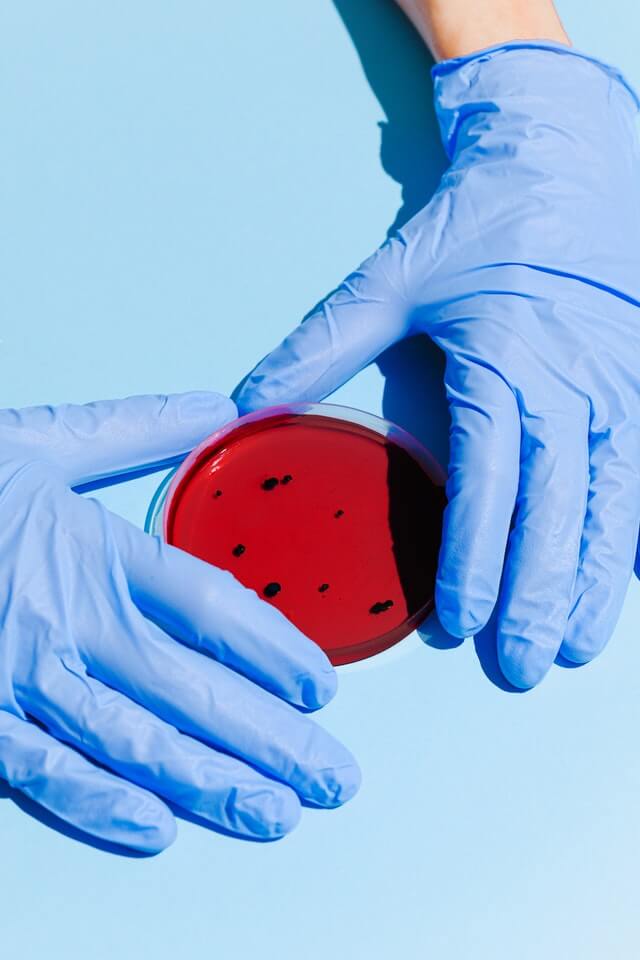 Mussel Inspired Chemistry and Bacteria Derived Polymers for Oral Mucosal Adhesion and Drug Delivery
Mussel Inspired Chemistry and Bacteria Derived Polymers for Oral Mucosal Adhesion and Drug DeliveryUlceration of the oral mucosa is common, can arise at any age and as a consequence of the pain lessens enjoyment and quality of life. Current treatment options often involve the use of topical corticosteroids with poor drug delivery systems and inadequate contact time. In order to achieve local controlled delivery to the lesion with optimal adhesion, we utilized a simple polydopamine chemistry technique inspired by mussels to replicate their adhesive functionality. This was coupled with production of a group of naturally produced polymers, known as polyhydroxyalkanoates (PHA) as the delivery system. Initial work focused on the synthesis of PHA using Pseudomonas mendocina CH50; once synthesized and extracted from the bacteria, the PHAs were solvent processed into films. [...] In conclusion, this simple mussel inspired polydopamine chemistry introduces a step change in bio-surface functionalization and holds great promise for the treatment of oral conditions.
Owji, N., Mandakhbayar, N., Gregory, D. A., Marcello, E., Kim, H., Roy, I., & Knowles, J. C. (2021). Mussel inspired chemistry and bacteria derived polymers for oral mucosal adhesion and drug delivery. Frontiers in Bioengineering and Biotechnology, 9, 663764. https://doi.org/10.3389/fbioe.2021.663764
DOI: https://doi.org/10.3389/fbioe.2021.663764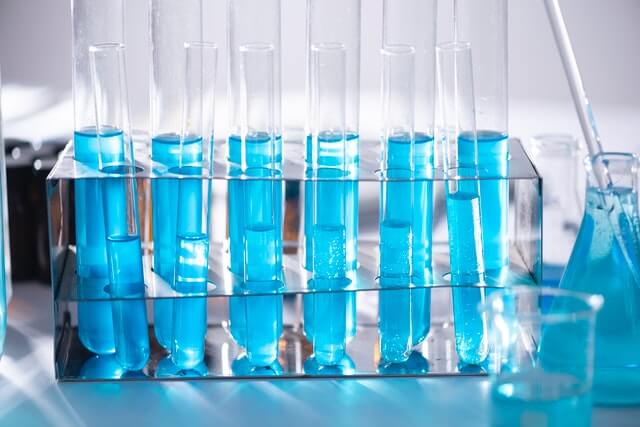 Toward a Closed Loop, Integrated Biocompatible Biopolymer Wound Dressing Patch for Detection and Prevention of Chronic Wound Infections
Toward a Closed Loop, Integrated Biocompatible Biopolymer Wound Dressing Patch for Detection and Prevention of Chronic Wound InfectionsChronic wound infections represent a significant burden to healthcare providers globally. Often, chronic wound healing is impeded by the presence of infection within the wound or wound bed. This can result in an increased healing time, healthcare cost and poor patient outcomes. Thus, there is a need for dressings that help the wound heal, in combination with early detection of wound infections to support prompt treatment. In this study, we demonstrate a novel, biocompatible wound dressing material, based on Polyhydroxyalkanoates, doped with graphene platelets, which can be used as an electrochemical sensing substrate for the detection of a common wound pathogen, Pseudomonas aeruginosa. Through the detection of the redox active secondary metabolite, pyocyanin, we demonstrate that a dressing can be produced that will detect the presence of pyocyanin across clinically relevant concentrations. Furthermore, we show that this sensor can be used to identify the presence of pyocyanin in a culture of P. aeruginosa. Overall, the sensor substrate presented in this paper represents the first step toward a new dressing with the capacity to promote wound healing, detect the presence of infection and release antimicrobial drugs, on demand, to optimized healing.
Ward, A., Dubey, P., Basnett, P., Lika, G., Newman, G., Corrigan, D. K., Russell, C., Kim, J., Chakrabarty, S., Connolly, P., Roy, I. (2020). Toward a Closed Loop, Integrated Biocompatible Biopolymer Wound Dressing Patch for Detection and Prevention of Chronic Wound Infections. Frontiers in Bioengineering and Biotechnology, 8, 1039.
DOI: https://doi.org/10.3389/fbioe.2020.01039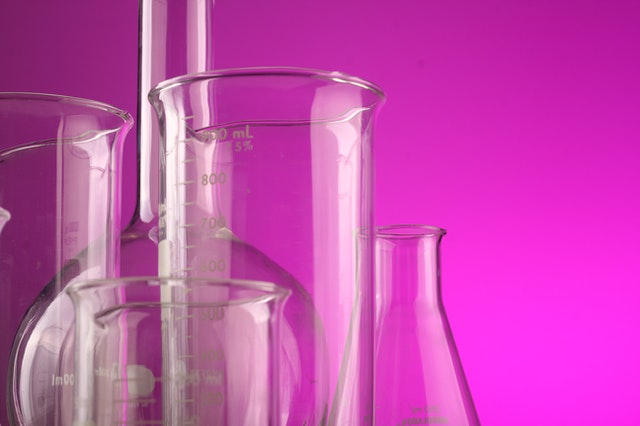 Polylactic Acid and Poly(Butylene Adipate-Co-Terephthalate) Blends Plasticised with Lactic Oligomers and Epoxy Reactive Plasticizers
Polylactic Acid and Poly(Butylene Adipate-Co-Terephthalate) Blends Plasticised with Lactic Oligomers and Epoxy Reactive PlasticizersPolylactic acid (PLA) is a compostable and sustainable polymer, derived from renewable resources, with high elastic modulus and high transparency. By the way PLA has even some limitations such as low glass transition temperature, low thermal stability, high brittleness, and low crystallization rate. To increase flexibility of PLA based materials it is possible to add low molecular weight plasticizers or prepare blends with another flexible polymer, such as poly(butylene adipate-co-terephthalate) (PBAT). Even the use of a compatibilizer may allow a modulation of mechanical properties thanks to the achievement of a phase morphology characterized by a lower dimension of the dispersed PBAT phase and an increased adhesion. In the present study, blends of PLA and PBAT were prepared by adding different plasticizers combinations based on an oligomer of lactic acid, a polyester of adipic acid and 1,2-propane diol, and an epoxy functionalised resin. All the plasticizers were effective in providing flexibility to the blends, with higher efficiency from the epoxy functionalised plasticizer, and the polyester of adipic acid. Fox’s equation showed that all plasticizers have the tendency to disperse more in the amorphous PBAT matrix than in the PLA one.
Cinelli, Patrizia, Mallegni, Norma, Fiori, Stefano, Seggiani, Maurizia, Coltelli, Maria Beatrice, Righetti, Maria Cristina & Lazzeri, Andrea. (2021). Polylactic Acid and Poly(Butylene Adipate-Co-Terephthalate) Blends Plasticised with Lactic Oligomers and Epoxy Reactive Plasticizers. Chemical Engineering Transactions, 88, 1333-1338.
DOI: https://doi.org/10.3303/CET2188222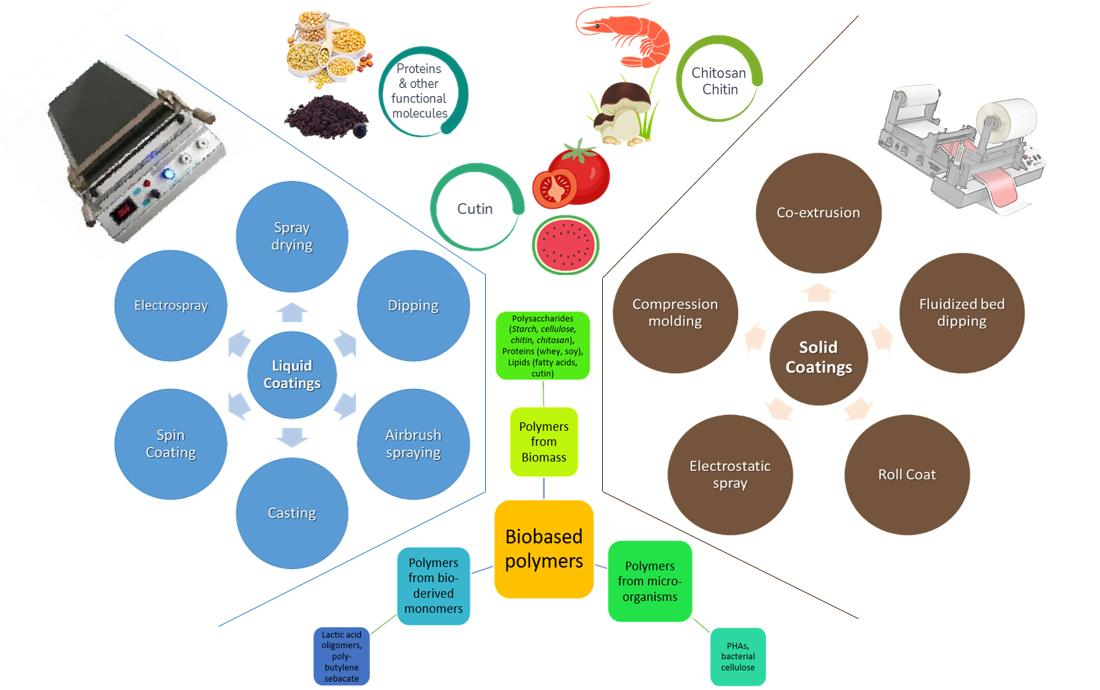 Liquid and Solid Functional Bio-Based Coatings
Liquid and Solid Functional Bio-Based CoatingsThe development of new bio-based coating materials to be applied on cellulosic and plastic based substrates, with improved performances compared to currently available products and at the same time with improved sustainable end of life options, is a challenge of our times. Enabling cellulose or bioplastics with proper functional coatings, based on biopolymer and functional materials deriving from agro-food waste streams, will improve their performance, allowing them to effectively replace fossil products in the personal care, tableware and food packaging sectors. To achieve these challenging objectives some molecules can be used in wet or solid coating formulations, e.g., cutin as a hydrophobic water- and grease-repellent coating, polysaccharides such as chitosan-chitin as an antimicrobial coating, and proteins as a gas barrier. This review collects the available knowledge on functional coatings with a focus on the raw materials used and methods of dispersion/application. It considers, in addition, the correlation with the desired final properties of the applied coatings, thus discussing their potential.
Gigante, Vito, Luca Panariello, Maria-Beatrice Coltelli, Serena Danti, Kudirat A. Obisesan, Ahdi Hadrich, Andreas Staebler, Serena Chierici, Ilaria Canesi, Andrea Lazzeri, and Patrizia Cinelli. 2021. "Liquid and Solid Functional Bio-Based Coatings" Polymers 13, no. 21: 3640. https://doi.org/10.3390/polym13213640
DOI: https://doi.org/10.3390/polym13213640 Bacterial cellulose: A smart biomaterial with diverse applications
Bacterial cellulose: A smart biomaterial with diverse applicationsNatural biomaterials have benefited the human civilisation for millennia. However, in recent years, designing of natural materials for a wide range of applications have become a focus of attention, spearheaded by sustainability. With advances in materials science, new ways of manufacturing, processing, and functionalising biomaterials for structural specificity has become feasible. Our review is focused on bacterial cellulose (BC), an exceptionally versatile natural biomaterial. BC is a unique nanofibrillar biomaterial extruded by microscopic single- cell bacterial factories utilising the chemical energy harvested from renewable substrates. BC is extracellular and is intrinsically pure, unlike other biopolymers that require extraction and purification. BC fibres are 100 times thinner than plant-derived cellulose and exist in a highly porous three-dimensional network that is highly biocompatible. Macro fibres fabricated from BC nanofibrils are stronger and stiffer, have high tensile strength values and can be used as substitutes for fossil fuel-derived synthetic fibres. The increased surface area to volume ratio allows stronger interactions with the components of composites that are derived from BC. The reactive hydroxyl groups on BC allows various chemical modifications for the development of functionalised BC with a plethora of ‘smart’ applications. In this review we consolidate the current knowledge on the production and properties of BC and BC composites, and highlight the very recent advancements in bulk applications, including food, paper, packaging, superabsorbent polymers and the bio-concrete industries. The process simplicity of BC production has the potential for large scale low-cost applications in bioremediation. Furthermore, the emerging high value applications of BC will be in electrochemical energy storage devices as a battery separator, and in transparent display technologies will be explored. Finally, the extensive biomedical applications of BC are discussed including, wound healing, controlled drug delivery, cancer treatment, cell culture and artificial blood vessels. In a further development on this, additive manufacturing considers enhancing the capabilities for manufacturing complex scaffolds for biomedical applications. An outlook on the future directions of BC in these and other innovative areas is presented.
David A. Gregory, Lakshmi Tripathi, Annabelle T.R. Fricker, Emmanuel Asare, Isabel Orlando, Vijayendran Raghavendran, Ipsita Roy (2021). Bacterial cellulose: A smart biomaterial with diverse applications. Materials Science and Engineering: R: Reports, Volume 145.
DOI: https://doi.org/10.1016/j.mser.2021.100623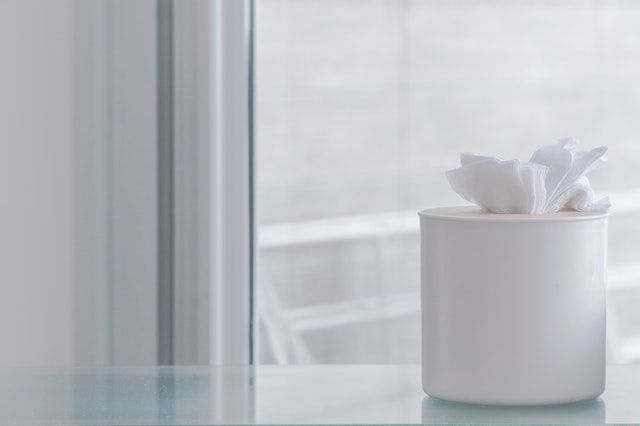 Electrosprayed Shrimp and Mushroom Nanochitins on Cellulose Tissue for Skin Contact Application
Electrosprayed Shrimp and Mushroom Nanochitins on Cellulose Tissue for Skin Contact ApplicationCosmetics has recently focused on biobased skin-compatible materials. Materials from natural sources can be used to produce more sustainable skin contact products with enhanced bioactivity. Surface functionalization using natural-based nano/microparticles is thus a subject of study, aimed at better understanding the skin compatibility of many biopolymers also deriving from biowaste. This research investigated electrospray as a method for surface modification of cellulose tissues with chitin nanofibrils (CNs) using two different sources—namely, vegetable (i.e., from fungi), and animal (from crustaceans)—and different solvent systems to obtain a biobased and skin-compatible product. The surface of cellulose tissues was uniformly decorated with electrosprayed CNs. Biological analysis revealed that all treated samples were suitable for skin applications since human dermal keratinocytes (i.e., HaCaT cells) successfully adhered to the processed tissues and were viable after being in contact with released substances in culture media. These results indicate that the use of solvents did not affect the final cytocompatibility due to their effective evaporation during the electrospray process. Such treatments did not also affect the characteristics of cellulose; in addition, they showed promising anti-inflammatory and indirect antimicrobial activity toward dermal keratinocytes in vitro. Specifically, cellulosic substrates decorated with nanochitins from shrimp showed strong immunomodulatory activity by first upregulating then downregulating the pro-inflammatory cytokines, whereas nanochitins from mushrooms displayed an overall anti-inflammatory activity via a slight decrement of the pro-inflammatory cytokines and increment of the anti-inflammatory marker. Electrospray could represent a green method for surface modification of sustainable and biofunctional skincare products.
Azimi, Bahareh; Ricci, Claudio; Fusco, Alessandra; Zavagna, Lorenzo; Linari, Stefano; Donnarumma, Giovanna; Hadrich, Ahdi; Cinelli, Patrizia; Coltelli Maria-Beatrice; Danti Serena; Lazzeri Andrea (2021). Electrosprayed Shrimp and Mushroom Nanochitins on Cellulose Tissue for Skin Contact Application. Molecules, 26(14), 4374. MDPI AG.
DOI: http://dx.doi.org/10.3390/molecules26144374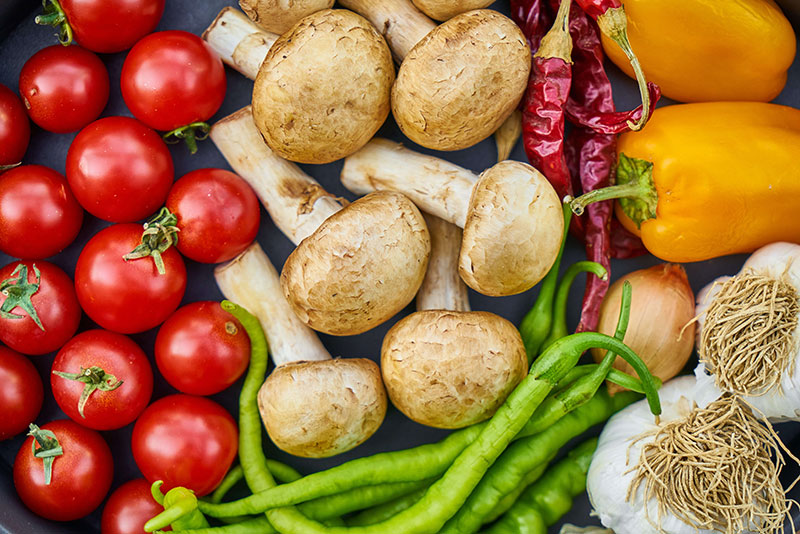 Overview of Agro-Food Waste and By-Products Valorization for Polymer Synthesis and Modification for Bio-Composite Production
Overview of Agro-Food Waste and By-Products Valorization for Polymer Synthesis and Modification for Bio-Composite ProductionThe growth of the world economy and the rising global population (9 billion by 2050) mean that the Earth’s natural resources are being used up fast. Resources need to be managed more efficiently throughout their life cycle, from extraction, transport, transformation and consumption, to the disposal of waste. Several companies, and research entities have developed biobased polymer resins nevertheless further improvements are needed to provide cost effective solutions with high bio-based content and suitable performances to meet for example the target of the newly enforced laws that requires some disposable items such as tableware to be home compostable from 2017 with a minimum bio-sourced content of 30% (increasing progressively in subsequent years to 60% in 2025). The combined plastic and food sector form an important part of the EU economy, accounting for 15 million jobs (7.6% of total employment). Unlocking the innovation potential in the field of packaging, and cosmetics will significantly contribute to job creation and competitiveness. Sustainable synthesis of polyhydroxyalkanaotes from agro-food by-products as well as synthesis of lactic acid co-polymers constitute a pathway to performing and sustainable polymeric matrices.
Vito, Sandroni Marco, Signori Francesca, Lazzeri Andrea (2020). Overview of Agro-Food Waste and By-Products Valorization for Polymer Synthesis and Modification for Bio-Composite Production. Proceedings 2021, 69(1)
DOI: https://doi.org/10.3390/CGPM2020-07211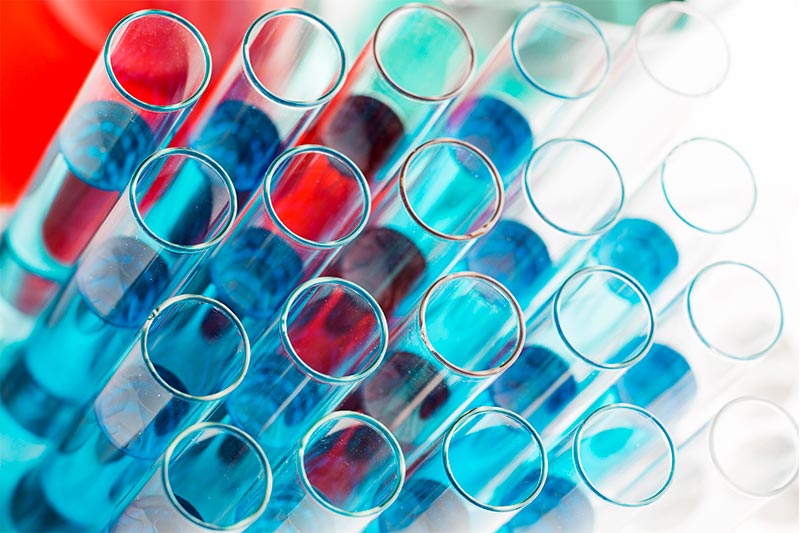 Chemical modification of bacterial cellulose for the development of an antibacterial wound dressing
Chemical modification of bacterial cellulose for the development of an antibacterial wound dressingBacterial cellulose is a bacterially derived polymer with great potential for application in wound healing due to its innate properties such as high biocompatibility and biodegradability. In addition to this, it is naturally biosynthesized by bacteria as a hydrogel, which makes it an optimal substrate for the treatment of dry wounds, where additional moisture is required to facilitate the healing process. However, this polymer lacks antibacterial properties. As bacterial infections are becoming increasingly common and difficult to treat due to antimicrobial resistance, it is of crucial importance to develop strategies for the modification of cellulose to ensure protection against bacterial contamination. In this study, a green-chemistry approach was proposed for the functionalization of cellulose to introduce antibacterial functional groups.
Orlando Isabel, Basnett Pooja, Nigmatullin Rinat, Wang Wenxin, Knowles Jonathan, Roy Ipsita (2020). Chemical modification of bacterial cellulose for the development of an antibacterial wound dressing. Frontiers in Bioengineering (8).
DOI: https://doi.org/10.3389/fbioe.2020.557885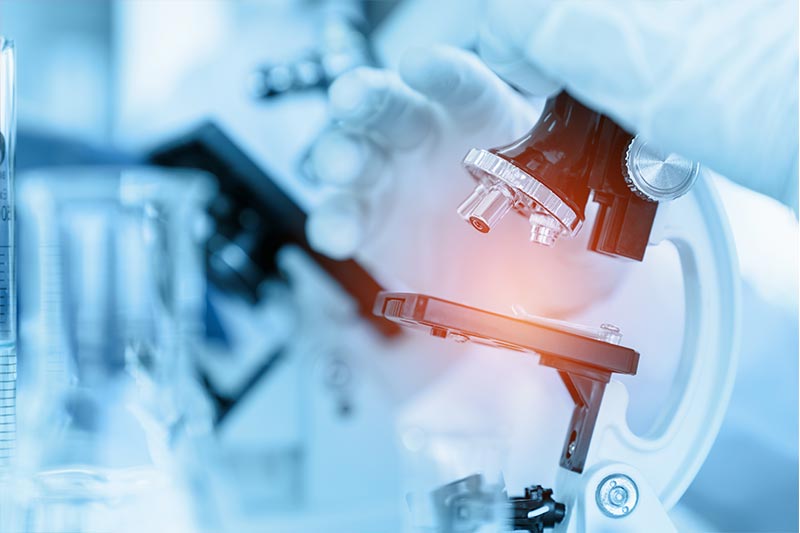 Bacterial cellulose: biosynthesis, production and applications
Bacterial cellulose: biosynthesis, production and applicationsBacterial cellulose (BC) is a natural polymer produced by the acetic acid producing bacterium and has gathered much interest over the last decade for its biomedical and biotechnological applications. Unlike the plant derived cellulose nanofibres, which require pretreatment to deconstruct the recalcitrant lignocellulosic network, BC are 100% pure, and are extruded by cells as nanofibrils. Moreover, these nanofibrils can be converted to macrofibers that possess excellent material properties, surpassing even the strength of steel, and can be used as substitutes for fossil fuel derived synthetic fibers. The focus of the review is to present the fundamental long-term research on the influence of environmental factors on the organism's BC production capabilities, the production methods that are available for scaling up/scaled-up processes, and its use as a bulk commodity or for biomedical applications
Raghavendran Vijayendran, Asare Emmanuel, Roy Ipsita (2020). Bacterial cellulose: biosynthesis, production and applications. Advances in Microbial Physiology, 89-138.
DOI: https://doi.org/10.1016/bs.ampbs.2020.07.002

